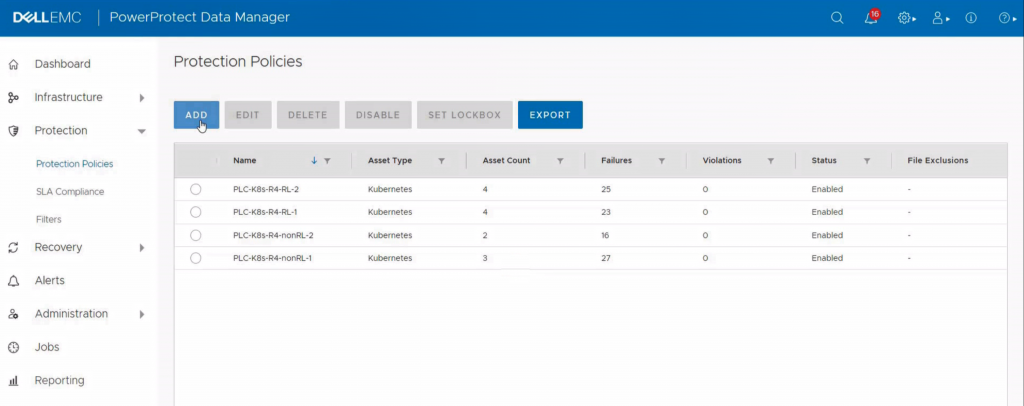Physicists define momentum as “the impetus gained by a moving object.” That may be the technical view, but in the world outside of physics, momentum commonly means “gaining speed.”
Many things thrive on momentum. An underdog sports team can gain momentum and work their way to a championship. Politicians can ride a wave of momentum into office. Even personal relationships build upon their momentum to blossom into love. In business, momentum is seen as a good thing. It’s a sign that you are doing something right, getting the attention of buyers and solving problems for customers.
For any new technology, there are few attributes more valuable than momentum and it’s no secret that the adoption of containers is seeing accelerated momentum. Kubernetes (K8s) usage is gaining momentum as the container platform of choice. Cloud monitoring company DataDog recently surveyed container users to discover that over 45 percent were using Kubernetes – representing a 20 percent increase over 2018.
So, what’s all the fuss? Containers seem to be the answer to the customer problem of how to continually run applications across multiple computing environments. Kubernetes, specifically, is an open source platform that provides orchestration of containerized applications. One of the benefits of Kubernetes is that it is ideal for hosting cloud native applications with requirements for flexible demand and/or rollback of applications.
Enterprise adopters of Kubernetes such as Goldman Sachs, Nordstrom and Comcast (to name just a few) rely on Kubernetes to help transform internal applications as well as make their products more dynamic, scalable and portable. Comcast, for instance, leverages K8s for their cloud DVR service – recording and managing content from millions of customers in multiple geographies – enabling them to become a more agile organization by rescaling, managing data center capacity and deploying content faster.
Whether it’s a cloud DVR or even ordering your favorite coffee via your phone app, IT is focusing on creating new business processes, culture, and customer experiences to meet changing business and market requirements. There’s plenty of orchestration and coordination needed to deliver these changes; all made possible through microservices and cloud native architectures. Kubernetes and containers are fast emerging as a key platform to enable these changes and becoming a key to modernizing development fabrics and IT transformation.
With momentum come challenges
One thing is for sure, Kubernetes is a part of many companies’ transformative plans to modernize. Whether internal or customer facing applications, K8s is a part of their development fabric. The recent “Conference Transparency Report” from KubeCon 2019 by The New Stack showed that of 380 respondents, over 55 percent are deploying database workloads in Kubernetes containers – a 23 percent increase over 2018. This kind of rollout does not come without complexities or challenges.
One such challenge is the backup and restore of Kubernetes. With all this development happening in the background:
- How are organizations protecting their Kubernetes workloads?
- How are IT teams managing the protection and restore of Kubernetes environments?
Kubernetes momentum and rapid adoption may have left some IT organizations behind as they focus on delivery.
To maintain momentum and continue to innovate, IT teams using K8s are challenged to continually release new features. Implementing a backup and recovery strategy is a part of this release process. Dell EMC PowerProtect Data Manager has integrated with Project Velero, a VMware-originated open source tool that can backup, restore, perform disaster recovery and migrate Kubernetes cluster resources, persistent volumes and storage attributes. Dev/Test teams can work from existing data sets.
PowerProtect Data Manager enables customers to place either existing production workloads or new workloads into Kubernetes production environments, knowing they will be protected. IT operations and backup admins can then manage Kubernetes data protection from a single management console, as K8s admins define protection for their workloads from the Kubernetes APIs.
PowerProtect Data Manager protects production and Dev/Test workloads in Kubernetes environments, ensuring that the data is easy to back up and restore, always available, consistent and durable in a Kubernetes workload or DR situation. App owners gain the benefit of an intuitive, easy to use UI while IT Ops can take advantage of centralized governance separate from Dev/Ops.
Organizations can protect Kubernetes directly into PowerProtect DD or Data Domain and gain benefits from secondary storage with unmatched efficiency, deduplication, performance and scalability. PowerProtect Data Manager is creating momentum. It is an answer to the data protection challenge for Kubernetes namespaces. It allows organizations to take existing production workloads or new workloads and start placing them in Kubernetes production environments, with the confidence that they will be protected. PowerProtect Data Manager is leading the way, enabling both data owners, K8s admins and IT Ops to discover, define and manage protection of Kubernetes as part of their complete data protection strategy.
As organizations jump onto the wave of momentum with Kubernetes, it is critical that they consider a data protection solution. Regardless of whether it’s IT operations or development teams, the work that is done in Kubernetes requires protection. PowerProtect Data Manager protection is an excellent option to discover, protect and restore K8s containers in production and Dev/Test environments.
See for yourself how the need for Kubernetes Data Protection is paramount: DevOps Meets Data Protection with Nelson Hsu and Alex Almeida
For more information visit: PowerProtect Data Manager
Learning more / Resources: velero.io
References:
https://www.datadoghq.com/container-report/
https://www.cio.com/article/2924995/what-are-containers-and-why-do-you-need-them.html
http://dpstechinsider.lss.emc.com/?p=2257
https://www.statista.com/topics/1002/mobile-app-usage/
https://blogs.wsj.com/cio/2016/02/24/big-changes-in-goldmans-software-emerge-from-small-containers/
Conference Transparency Report: KubeCon + CloudNativeCon, North America 2019 (November 18 – 21)
https://thenewstack.io/this-week-in-numbers-more-stateful-apps-as-kubernetes-packaging-improves/


